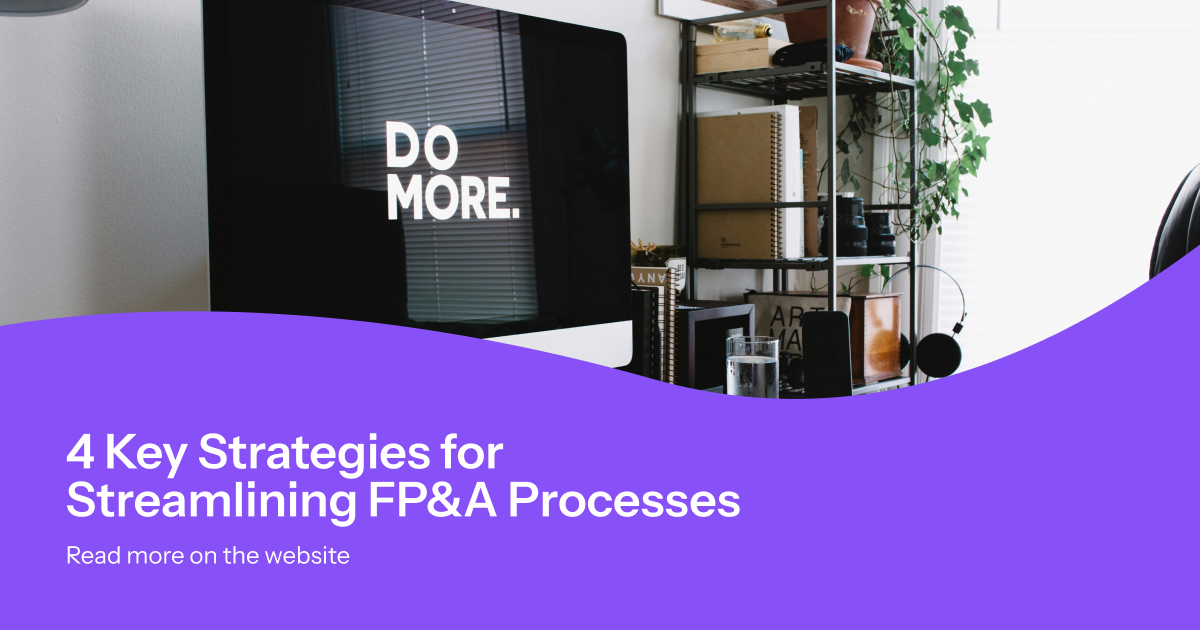Financial Planning & Analysis (FP&A) groups are expected to deliver faster insights, more frequent forecasts, and deeper guidance—often with the same head‑count. This long‑read sets out five proven strategies that streamline the end‑to‑end FP&A cycle while raising analytical quality:
Combined, these practices can reduce forecast cycle time by 30–50 %, improve forecast accuracy by 5–10 percentage points, and free analysts for value‑adding work.
- Unify the data architecture and automate data acquisition.
- Move from line‑item to driver‑based planning.
- Adopt rolling forecasts and integrated scenario analysis.
- Embed self‑service reporting and advanced analytics.
- Institutionalise cross‑functional collaboration and ownership.
Combined, these practices can reduce forecast cycle time by 30–50 %, improve forecast accuracy by 5–10 percentage points, and free analysts for value‑adding work.
Unify the Data Architecture and Automate Data Acquisition
Data silos, spreadsheet extracts, and manual reconciliations are the biggest source of delay and error in FP&A. A single, governed source of truth removes the friction.
Look at an implementation roadmap:
Look at an implementation roadmap:
- Map all financial and operational source systems (ERP, CRM, HRIS, data marts).
- Choose target platform (lakehouse or enterprise DWH) and ETL/ELT tooling.
- Build automated ingestion with metadata and error handling.
- Implement data‑quality rules (completeness, accuracy, timeliness).
- Establish data catalog and stewardship roles.
Move from Line‑Item to Driver‑Based Planning
Rather than planning thousands of cost or revenue lines directly, driver‑based planning links financial outcomes to a handful of operational drivers: volume, price, mix, productivity, utilisation.
It can give you several benefits:
To implement it you should:
It can give you several benefits:
- Transparency: clear cause‑and‑effect mapping.
- Speed: fewer input cells, faster iterations.
- Scenario agility: changing a driver instantly recalculates the P&L, balance sheet, and cash flow.
To implement it you should:
- Identify value drivers. It can be workshop with operations, sales, HR.
- Build modular calculation blocks. Try to look at these metrics: separate revenue, COGS, OPEX, working capital.
- Validate elasticities. Make a back‑test model sensitivity against historical actuals.
- Deploy in an xP&A platform with audit trail and user security.
Adopt Rolling Forecasts and Integrated Scenario Analysis
Rolling forecast and scenario analysis help companies to make verified and actual plans. Also, using these approaches gives business an opportunity to stay update in changing economic conditions via giving a 12‑ to 18‑month forward view.
However, such approaches need to be refreshed rather frequently - monthly or quarterly update using latest actuals - with driven three different scenario layers (Base, Upside, Downside).
Sequence for adoption
Tool considerations
Modern planning suites (e.g., Anaplan, Oracle Cloud EPM, SAP Analytics Cloud, Workday Adaptive Planning, Spreadym) support dynamic time dimensions and multi‑scenario storage.
However, such approaches need to be refreshed rather frequently - monthly or quarterly update using latest actuals - with driven three different scenario layers (Base, Upside, Downside).
Sequence for adoption
- Stabilise monthly close. Close in ≤ 5 business days.
- Pilot rolling forecast on OPEX. Demonstrate early value.
- Extend to full P&L, cash, and capital.
- Integrate macro and market scenarios: FX, commodity, demand shocks.
Tool considerations
Modern planning suites (e.g., Anaplan, Oracle Cloud EPM, SAP Analytics Cloud, Workday Adaptive Planning, Spreadym) support dynamic time dimensions and multi‑scenario storage.
Institutionalise Cross‑Functional Collaboration and Ownership
Even the best model fails if inputs are stale or disputed. Streamlined FP&A relies on clear ownership and integrated planning cycles.
Practices
Cultural enablers
Practices
- Integrated Business Planning (IBP). Align demand, supply, and finance in one calendar.
- RACI matrix for forecast inputs. Each driver has Responsible, Accountable, Consulted, Informed roles.
- Monthly forecast forums chaired jointly by the CFO and COO.
- Post‑mortem reviews after each quarter to capture learnings and update assumptions.
Cultural enablers
- Transparency of assumptions.
- Shared KPIs (forecast accuracy, working‑capital turns) in leadership scorecards.
- Incentives linking operational and financial targets.
Conclusion and Next Steps
Streamlined FP&A is not a single project but an operating model characterised by clean data, driver‑based logic, continuous forecasting, democratised analytics, and collaborative governance. Organisations that follow the five strategies outlined here typically move from report builders to insight partners.
First 90‑day action plan
By executing this roadmap, the finance function gains both speed and strategic relevance—freeing capacity for scenario thinking and proactive guidance.
First 90‑day action plan
- Launch data‑architecture assessment.
- Prototype a driver‑based model for the largest revenue line.
- Shorten the next forecast cycle by 20 % using a rolling‑forecast template.
- Deploy an executive dashboard for the top five KPIs.
- Publish a RACI matrix for all forecast drivers.
By executing this roadmap, the finance function gains both speed and strategic relevance—freeing capacity for scenario thinking and proactive guidance.

